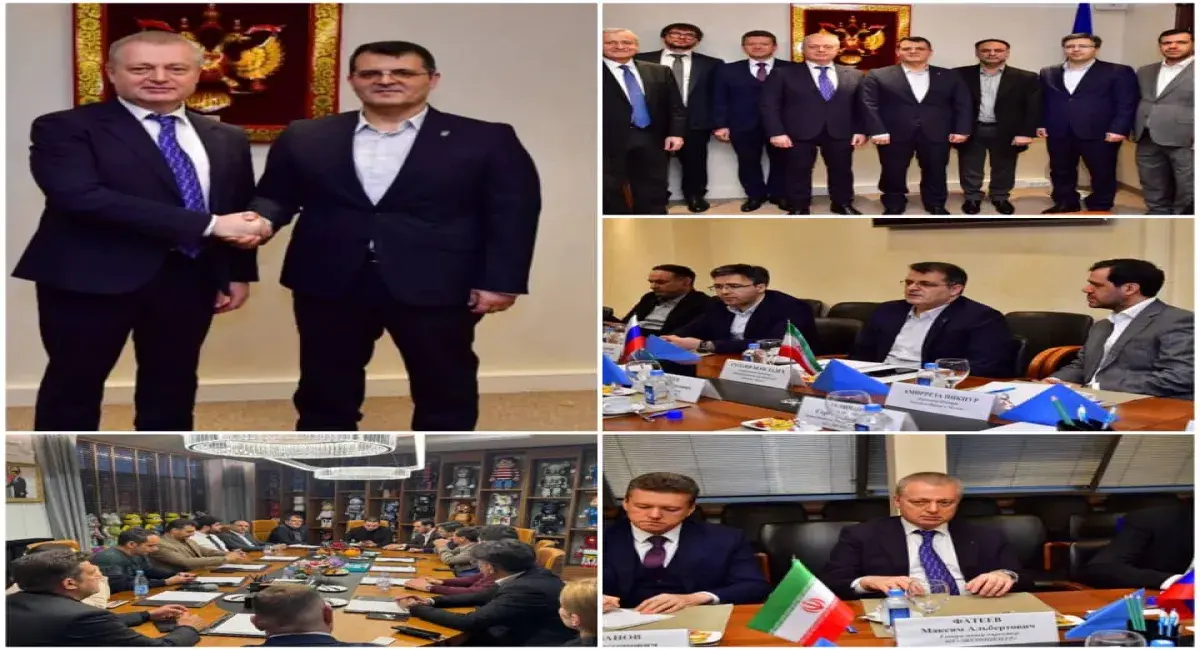Promoting international trade: Trade with Russia at the “Prodexpo-2025” exhibition

فهرست مطالب
Booth Building Media – On the sidelines of the establishment of the national pavilion at the 33rd International Exhibition of Food, Beverages and Raw Materials in Russia titled “ Prodexpo -2025”, important agreements were reached between the exhibition officials of Iran and Russia. These agreements will not only help develop trade and economic cooperation between the two countries, but also pave the way for cultural interactions and strengthening trade diplomacy in the Eurasian region.
This article examines the economic and cultural dimensions of these agreements and analyzes their effects on bilateral and regional relations.
Economic dimensions of exhibition agreements:
Strengthening bilateral trade: The agreements include the participation of Iranian and Russian companies in eight international specialized exhibitions with preferential discounts and exchange of exhibition spaces. These agreements will allow Iranian companies to introduce their products in the Russian market, and on the other hand, Russian companies can also strengthen their presence in the Iranian market. It will help increase the volume of bilateral trade and diversify Iran’s export portfolio.
Improving non-oil exports: Given Iran’s emphasis on developing non-oil exports, participation in international exhibitions such as “Prodexpo-2025” is a strategic opportunity to introduce Iranian food and agricultural products to global markets. Russia, as one of the largest consumer markets in the Eurasian region, can be an important destination for Iranian products. These agreements will also help increase Iran’s share in trade with the Eurasian Union member states.
Facilitating access to regional markets: With the implementation of the free trade agreement between Iran and the Eurasian Union, recent exhibition agreements can serve as a complement to facilitating access for Iranian companies to regional markets.
Investment attraction and technology transfer: The presence of Russian companies in Iranian exhibitions and vice versa not only helps develop trade, but also paves the way for investment attraction and technology transfer. This can help increase the competitiveness of Iranian products in global markets, especially in areas such as food packaging, product preservation technologies, and supply chain development.
Cultural dimensions of exhibition agreements:
Strengthening cultural diplomacy: International exhibitions are not limited to trade, but are an opportunity for cultural exchange and strengthening public diplomacy. Iran’s presence at the “Prodexpo-2025” exhibition with a national pavilion that includes a variety of products such as sweets, tomato paste, dried fruits, canned goods, olives, various sauces, jams and beverages, not only helps introduce Iran’s food culture, but also presents a positive image of the country’s economic and cultural capabilities.
Cultural interactions between the two countries: The recent exhibition agreements could serve as a bridge for greater cultural interactions between Iran and Russia. With the increased presence of Iranian companies in Russia and vice versa, opportunities will be created for the people of the two countries to become more familiar with each other’s culture, customs, and lifestyles.
Promoting Iran’s national brand: Iran’s successful participation in international exhibitions such as “Prodexpo-2025” helps promote Iran’s national brand globally. This not only leads to increased trust in Iranian products in global markets, but also presents a positive image of Iran as a country with high economic and cultural potential.
Challenges and opportunities:
Logistical and transportation constraints between Iran and Russia: This challenge, based on logistical and transportation constraints between the two countries, requires careful planning to overcome these constraints.
Differences in product quality and packaging standards: Given the differences in quality and packaging standards in Iranian and Russian products, careful planning and addressing relevant challenges are needed to improve the level of quality and interactions with customers between the two countries.
Competition with other food exporting countries: In the area of competition with other countries in global markets, Iran must take advantage of the advantages and opportunities.
Conclusion:
The recent exhibition agreements between Iran and Russia at the “Prodexpo-2025” exhibition are an important step towards developing economic and cultural cooperation between the two countries. These agreements will not only help increase the volume of bilateral trade and improve Iran’s non-oil exports, but also create opportunities to strengthen cultural diplomacy and promote Iran’s national brand globally. However, to fully exploit these opportunities, careful planning and overcoming existing challenges are required.
